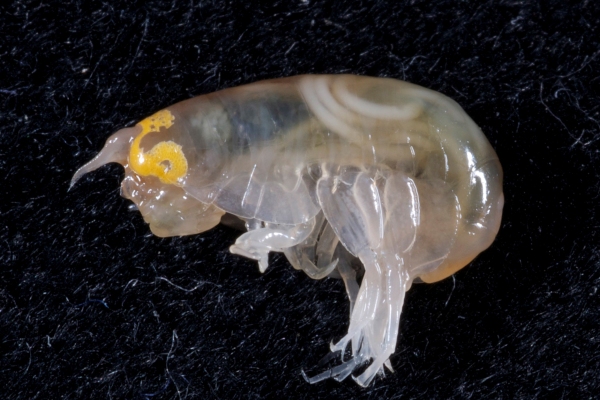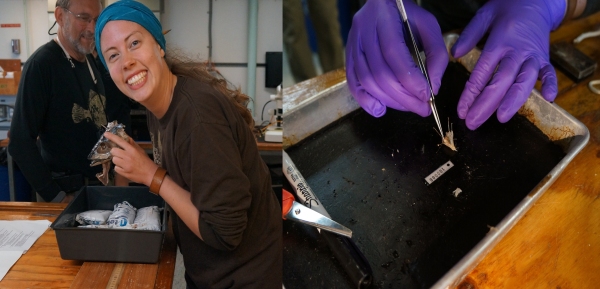This week we introduce to you the deepest parasite ever recorded, a nematode of the genus Trophomera Rubtzov & Platonova 1974, which spends most of its life inside the body cavity of the giant amphipod Hirondellea dubia Dahl, 1959.
This parasite was discovered last year during a research expedition, Hadal Ecosystems Studies (HADES) Program, led by Woods Hole Oceanographic Institute aboard the research vessel Thomas G Thompson. NIWA Marine Biologist Daniel Leduc and colleagues on board the vessel noticed spaghetti-like structures through the transparent body wall of some of the thousands of giant amphipods they collected using baited traps. These structures turned out to be parasitic nematodes, often longer than their host, tightly curled inside the amphipods.
This genus of nematodes spend their adult life in the sediments, where they mate and lay eggs. The eggs are then (presumably) ingested by the amphipods. The eggs hatch, and the juveniles find a cosy place inside the host where they can feed and grow up to several centimetres long. When they are about to reach adulthood, they crawl their way out of the host (a bit like in the movie Alien!) and undergo their final moult. The nematodes were found from about 6000 to 10,000 m depth, making them the deepest parasites known. Ongoing research aims to establish where this enigmatic species fits in the wider nematode tree using morphological and molecular tools.
This picture was taken with a scanning electron microscope and shows the head of the nematode parasite magnified 2000 times. Despite its pudgy appearance and lack of a proper mouth, this nematode eventually kills its host by forcing its way out through the body wall. The only external features visible are tiny sensory hairs.
The nematodes were spotted inside the amphipods after many hours of sorting amphipods collected by baited fish trap on the 2014 voyage. One of the participants, graduate student Kirstin Meyer from the University of Oregon, undertook the delicate job of extracting the nematodes from the amphipods with her dissection tools brought along to extract the gonads of the deep trench fauna that were collected.
Finding these nematodes in such numbers inside their host is unusual (one amphipod host contained four nematode parasites). Trophomera is rare around the world and most specimens collected so far are adults extracted from deep-sea sediments.
Further information
The article below was written about the Kermadec Trench meiofaunal discoveries:
The Kermadec Trench Meiofaunal Discoveries
The other work onboard is summarised in the HADES mission video:
The specimens photographed in this blog were collected on the Hadal Ecosystem Studies (HADES) Kermadec Ridge 2014 expedition, led by the Woods Hole Oceanographic Institution and funded by the US National Science Foundation. NIWA staff were supported by the project “Impacts of resource use on vulnerable deep-sea communities” (MBIE contract CO1X0906).



